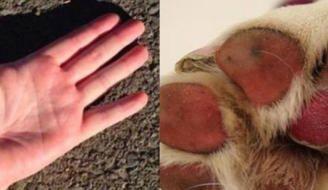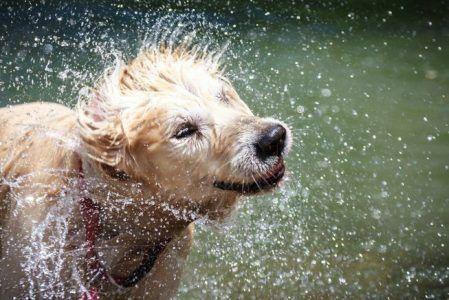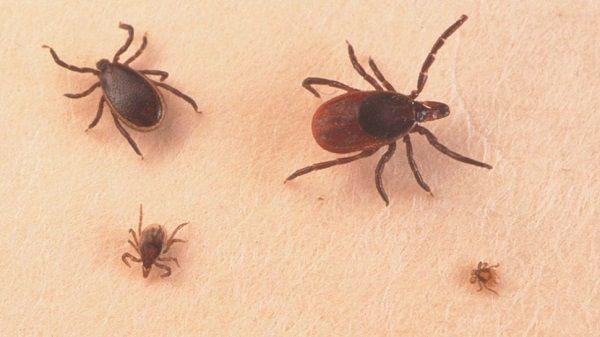Summer Heat - Keeping your dogs happy and healthy in the heat
Dogs in hot weather - As temperatures rise, follow this guide to keeping your dog safe and having fun in the summer sun…
Keep up to date with the Daily Weather Forecast HERE
Dogs in Hot Weather - Health issues
Heatstroke in dogs
Dogs can suffer fatal heatstroke within minutes. Unlike humans, dogs can’t sweat through their skin and so they rely on panting and releasing heat through their paw pads and nose to regulate their body temperature and keep cool.
Signs of heatstroke in dogs include collapse, excessive panting, and dribbling.
If you suspect your pet is suffering from the condition, move them to a cool place, preferably with a draught, wet their coat with cool - not freezing - water, and contact your vet immediately.
Once a dog shows signs of heatstroke the damage is often already done, which is why it’s so important to prevent it.
Dogs in Hot Weather - Safety
Dogs in hot cars
Dogs succumb to heatstroke quickly. As above, they cannot sweat in the same way that people can and cannot keep cool as easily as we can. A car can become an oven very quickly even when it doesn’t feel that warm. When it is 22°c outside - within an hour - the temperature in a car can reach an unbearable 47°c.
Never leave a dog in a car, even for a moment. "Not long" is too long.
Police also warn of a hoax circulating on social media
The hoax says “If you see an animal locked in a car in hot weather, take a photo then smash a window to get it out, this means you will not face charges for criminal damage”.
Police say this is UNTRUE.
They say call them immediately, they will decide what to do. List of emergency numbers HERE
How to keep a dog cool and prevent heatstroke
Make sure your dog has access to clean water at all times, ideally a large bowl filled to the brim. Carry water and a bowl with you on walks.
On hot days, walk your dog during the cooler parts of the day, in the early morning and late evening.
Follow the 5 second rule when walking your dogs
The Guardia Civil warn about the danger to dogs paws when walking in hot weather.
Dogs' paw pads can burn on hot pavements. As a general rule, if it's too hot for your hand it's too hot for their paws, put the back of our hand on the asphalt and see if we can keep it there for five seconds, if you cant then its too hot for your dogs to walk on. If it's too hot for the usual long walk, keep your dog mentally stimulated by doing some brain games instead.

Watch your pet for signs of over-heating, including heavy panting and loss of energy. If you recognise these signs when on a walk, stop, find a shady spot and give your dog water.
Never leave your dog (or any pet) alone in a car, even with the windows open
Make cooling tasty treats by making ice cubes with your dog’s favourite food inside or stuff a Kong and pop it in the freezer
Be particularly careful with short nosed dogs such as bull breeds, boxers, pugs, older dogs, and those that are overweight. These dogs can get heatstroke simply by running around.

Dogs in Hot Weather, Water activities
Swimming
Swimming is excellent exercise for dogs and a great exercise alternative to walking in the summer heat. But remember that not all dogs like to swim, so if yours doesn’t then don’t force them and never throw a dog into water.
Be wary of tides at the beach
Drinking salt water is likely to make your dog sick and isn’t very good for them. Bring fresh water with you to the beach.
Wash salt and sand off your dog’s coat after swimming to prevent it drying and irritating their skin
Be careful to avoid heatstroke on the beach
Watch out for currents in rivers
Check freshwater lakes, rivers, ponds and canals to make sure they are clean before letting your dog dive in. Some types of algae, including blue-green algae, are toxic to dogs. If your dog swims in algae-contaminated water, contact your vet immediately.
Dogs can and do drown in rivers and the sea. If your dog has inhaled water, contact your vet, as they can suffer complications.
Sadly, each year dog owners drown trying to rescue their pets. Don’t risk dangerous situations.

Dogs in Hot Weather
Water Intoxication
Water intoxication is when dogs swallow too much water in a short space of time. It’s rare, but this condition can lead to brain damage and, in extreme circumstances, can be fatal.
Dogs can sometimes swallow too much water when they are swimming, so it’s key that you keep an eye on them when you’re treating them to a cool off.
Five signs that your dog may have water intoxication
Vomiting, Loss of coordination (this can include falling over or swaying), Bloating, Tiredness Pale gums
If your dog starts to struggle with their breathing or loses consciousness after playing in the water, call your vet immediately.
How to stop water intoxication
Monitor your dog carefully while they're playing in the water. If they look like they are swallowing a lot of water, take them out and allow them to relax.
Limit the amount of time dogs spend playing in the water to 10 minutes, allowing them to go to the toilet in between swimming sessions and catch their breath
Always carry fresh drinking water with you when at the beach. Swallowing a lot of salt water can lead to salt poisoning which has the same symptoms as water intoxication.
Dog Friendly Beaches in the Area
Summer skin and coat
Pale-coloured dogs are vulnerable to sunburn, particularly on their ears, noses and sparsely haired areas. Sun damage can lead to skin cancer which may require extensive surgery – even amputation in severe cases. Sunlight can also make existing skin conditions worse, particularly if your dog has allergies.
Put a T-shirt on your dog and cover vulnerable areas to protect them. You can also apply a non-toxic waterproof human sunblock or one specifically made for pets. If your dog’s skin looks sore, crusty or scaly, call your vet.
Grooming your dog is important in the summer months, especially for longhaired breeds, to get rid of matts and tangles. A tangle-free coat will protect your pet’s delicate skin and help to keep them cool. Plus, if your pet’s coat is dirty and matted then you run the risk of flies laying their eggs and becoming maggots. Some breeds may need their coats trimming to keep them comfortable. Ask a professional groomer for advice.
If your dog swims or paddles in the sea to keep cool, remember to rinse the salt water and sand from your dog’s coat after to avoid drying out and irritating their skin.
Dogs in Hot Weather - Creepy crawlies and other dangers
More info on Ticks and other dangerous insects and creepy crawlies can be found HERE
Pests that love to bite your dog come out in their droves in summer. Fleas and ticks thrive in the heat and can be a real nuisance to your furry friend.
Fleas
Flea bites are annoying and itchy for most dogs, but if your dog is allergic to them then they can cause real discomfort and severe scratching, which can become infected.
Regular flea treatment is the only way to prevent these little critters – a one-off application won’t be enough. The most effective treatments come from your vet, so ask them for a recommendation.
If your dog has fleas you will need to treat your home as well to get rid of the eggs.
Ticks
Ticks are spider-like, egg-shaped creepy crawlies that are common in woodland, grassland and heath areas.

Ticks carry diseases, so it’s important to remove any that attach themselves to your dog. This can be tricky, as you need to be careful not to squeeze the tick’s body, or allow its head to get stuck inside your dog. Twisting them off your dog is the best removal method, and pet shops sell handy tick-removal devices to make this easier. Ask your vet for advice.
Lyme disease is serious, use tick treatment for your dog which will kill the tick before they can transmit the disease, consult you local vet.
If you are bitten by a tick, contact your doctor, wear long trousers if walking through tick infested areas.
Protecting your pets from Mosquito bites
Dangers of Mosquitoes for Dogs
Mosquitoes can transmit heartworm to dogs, (Dirofilaria immitis) this is a worm that infects the blood vessels and heart of a dog, injuring the dog’s cardiovascular and respiratory systems. If a mosquito bites an infected dog, it can ingest heartworm larvae within that dog’s blood. Those larvae are passed to the next dog that same mosquito bites, and then they mature into adult worms within that second dog’s body.
If left untreated, heartworms can grow up to a foot long. A dog with heartworm can appear lethargic, cough, or vomit, and have difficulty breathing. It is important to treat heartworm early on before significant damage can be done to the dog’s body. Visit your vet for treatment.
Cats
Heartworms are often thought of as a problem that only affects dogs, but mosquitoes can spread heartworms to cats too. Canine heartworm disease and feline heartworm disease are different, and a cat’s immune system often kills off the heartworm larvae, stopping the infection.
As a result, cats develop adult heartworms only about 10 percent as often as dogs do. While dogs can have several hundred heartworms at a time, cats only have between one to three adult worms. Heartworm can damage your cats’ lungs and hearts just the same way that it can in dogs.
Prevention
NEVER use DEET: NEVER use DEET on animals. This is dangerous to your pets. Citronella and eucalyptus oil may be safer but get the advice of your vet before using any mosquito repellent on your pet.
Keep Pets Indoors If possible, keep your pets indoors early in the morning and from dusk onwards. Alternatively, put them in an enclosure fitted with a screen.
Because mosquitoes lay their eggs in stagnant water, it’s important to remove any standing water that may be present, change the water in your pets bowl frequently, during hot weather.
Buy a good quality mosquito collar and change it as recommended by the manufacture.
Use a mosquito repelling shampoo.
There are certain natural ingredients that are safe for use on dogs. Lemon eucalyptus oil is one such ingredient, create a homemade spray, mix 25 drops of lemon eucalyptus essential oil and 4 oz of witch hazel. You can also combine these ingredients with some real vanilla extract or peppermint essential oil for even more benefit. Take note when spraying your dog to avoid getting any in their eyes.
Dilute verbena, lavender, pine, catnip, rosemary, basil, thyme, lemon eucalyptus, lemon balm, peppermint, and fennel. essential oils and dab them at the nape of your dog’s neck to naturally repel mosquitoes. Essential oils are extremely concentrated, so always mix them with a carrier oil before application.
Feed your dog some garlic to help repel mosquitoes! Dogs can safely consume 1/4 clove of garlic per ten pounds. Simply mince the garlic and add to your dog’s favorite food,
Bees and wasps
Dogs love to chase buzzing insects, but getting too close can be dangerous.
Most insect stings will simply cause your dog pain and irritation, but multiple stings can be fatal.
Dogs are also at risk when they snap at bees and wasps because this makes them more likely to be stung in the mouth or throat. Stings in these areas are hazardous because any swelling can block your pet’s airway.
Some dogs are allergic to bee and wasp stings, so watch out for signs of allergic reaction, including swelling and difficulty breathing.
If you think your dog has been stung multiple times, or is having an allergic reaction, take them to a vet straight away.




